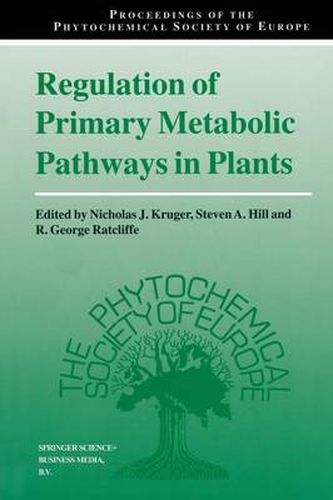Readings Newsletter
Become a Readings Member to make your shopping experience even easier.
Sign in or sign up for free!
You’re not far away from qualifying for FREE standard shipping within Australia
You’ve qualified for FREE standard shipping within Australia
The cart is loading…






This title is printed to order. This book may have been self-published. If so, we cannot guarantee the quality of the content. In the main most books will have gone through the editing process however some may not. We therefore suggest that you be aware of this before ordering this book. If in doubt check either the author or publisher’s details as we are unable to accept any returns unless they are faulty. Please contact us if you have any questions.
Over the past decade, advances in molecular biology have provided the impetus for a resurgence of interest in plant metabolism. At a general level, the potential for modifying the quantity or quality of harvestable crop products through genetic manipulation has provided an agronomic rationale for seeking a greater understanding of primary plant metabolism and its regulation. Moreover, the now facile techniques for transformation of many plant species and the consequential capacity to manipulate the amounts of specific individual enzymes within specific cell types provides an exciting direct approach for studying metabolic problems. Such transgenic plants are also becoming invaluable tools in studies at the interface between metabolism and other sub-disciplines such as physiology and ecology. The interest generated in plant metabolism by these developments has also encouraged the re-introduction of more conventional biochemical techniques for metabolic analysis. Finally, in common with other areas of cell biology, the wealth of information that can be obtained at the nucleic acid level has provided the stimulus for identification and characterisation of metabolic processes in far greater detail than previously envisaged. The result of these advances it that researchers now have the confidence to address problems in plant metabolism at levels not previously attempted. This book presents the proceedings of an international conference held on 9-11 January 1997 at St Hugh’s College, Oxford under the auspices of the Phytochemical Society of Europe.
$9.00 standard shipping within Australia
FREE standard shipping within Australia for orders over $100.00
Express & International shipping calculated at checkout
Stock availability can be subject to change without notice. We recommend calling the shop or contacting our online team to check availability of low stock items. Please see our Shopping Online page for more details.
This title is printed to order. This book may have been self-published. If so, we cannot guarantee the quality of the content. In the main most books will have gone through the editing process however some may not. We therefore suggest that you be aware of this before ordering this book. If in doubt check either the author or publisher’s details as we are unable to accept any returns unless they are faulty. Please contact us if you have any questions.
Over the past decade, advances in molecular biology have provided the impetus for a resurgence of interest in plant metabolism. At a general level, the potential for modifying the quantity or quality of harvestable crop products through genetic manipulation has provided an agronomic rationale for seeking a greater understanding of primary plant metabolism and its regulation. Moreover, the now facile techniques for transformation of many plant species and the consequential capacity to manipulate the amounts of specific individual enzymes within specific cell types provides an exciting direct approach for studying metabolic problems. Such transgenic plants are also becoming invaluable tools in studies at the interface between metabolism and other sub-disciplines such as physiology and ecology. The interest generated in plant metabolism by these developments has also encouraged the re-introduction of more conventional biochemical techniques for metabolic analysis. Finally, in common with other areas of cell biology, the wealth of information that can be obtained at the nucleic acid level has provided the stimulus for identification and characterisation of metabolic processes in far greater detail than previously envisaged. The result of these advances it that researchers now have the confidence to address problems in plant metabolism at levels not previously attempted. This book presents the proceedings of an international conference held on 9-11 January 1997 at St Hugh’s College, Oxford under the auspices of the Phytochemical Society of Europe.